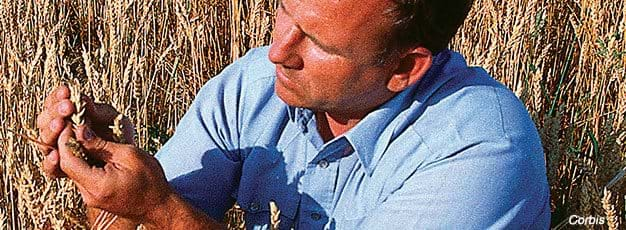Specialized Wheat Farms Earn Less than Other Farms

The U.S. wheat sector is facing decreased demand and increased competition. Domestic food-use demand has fallen over the past decade as consumer preferences have changed, and the sector faces strong competition in export markets. Subsequent low returns relative to other crops have led to the substitution of competing crops for wheat in many areas, particularly in the Plains States. U.S. wheat planted area in recent years is about 30 percent less than in the early 1980s. In the future, downward pressures on wheat plantings can be expected to continue, as total returns (sales plus government payments) favor other crops, and export and domestic demand for wheat remains modest. However, low stocks and wheat prices above $3 per bushel will prevent a dramatic decline in acreage.
These challenges are particularly severe for farms that depend upon wheat for over half of their receipts. These specialized wheat farms are concentrated in the Great Plains and the Pacific Northwest and account for over 40 percent of total wheat production.
According to USDA’s Agricultural Resource Management Survey, specialized wheat farms typically have significantly lower gross and net farm incomes and fewer financial assets than other farms producing wheat. In addition, specialized wheat farms are more dependent on government payments and off-farm earnings.
In 2003, government payments to the specialized wheat farms averaged nearly $17,000, about 60 percent of their total net farm earnings ($28,000).
Total household income for the specialized wheat farms averaged about $55,000 in 2003, with 75 percent of that ($42,000) coming from off-farm sources; in contrast, total household income for other wheat farms averaged about $78,000, with off-farm income contributing less than half of that ($37,000).
Though total acreage on specialized wheat farms and other wheat farms is similar, sales per farm tend to be smaller among specialized wheat farms. Less than 10 percent of these specialized wheat farms had sales over $250,000, compared with nearly one-third of the other wheat farms.
A farm is financially viable if its revenue fully covers economic costs (cash costs plus an allowance for depreciation plus imputed returns to management, land, and unpaid labor of the operator and family). The long-term viability of specialized wheat farms depends heavily on government payments. Without government payments, fewer than 20 percent of the specialized wheat farms would have had farm revenue greater than economic costs. With government payments, nearly a third of the farms were financially viable.
Wheat Backgrounder, by Gary Vocke, Edward Allen, and Mir Ali, USDA, Economic Research Service, December 2005


